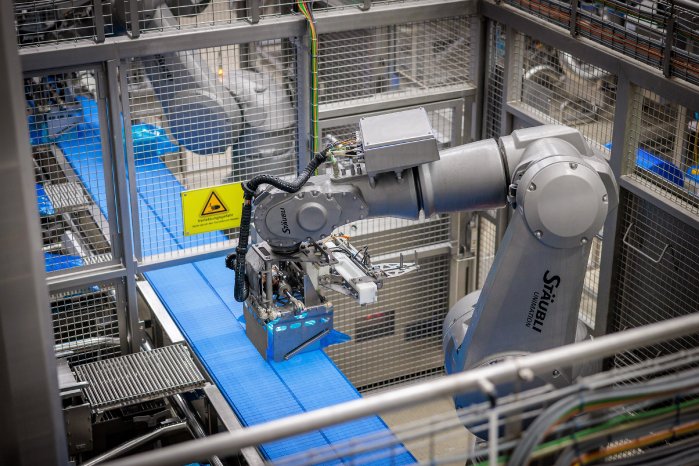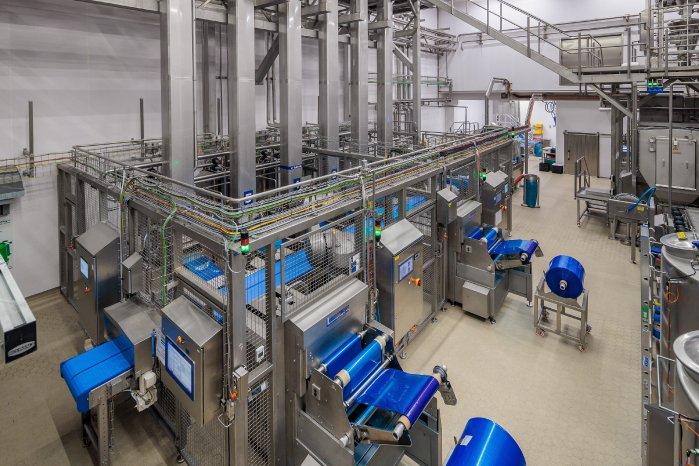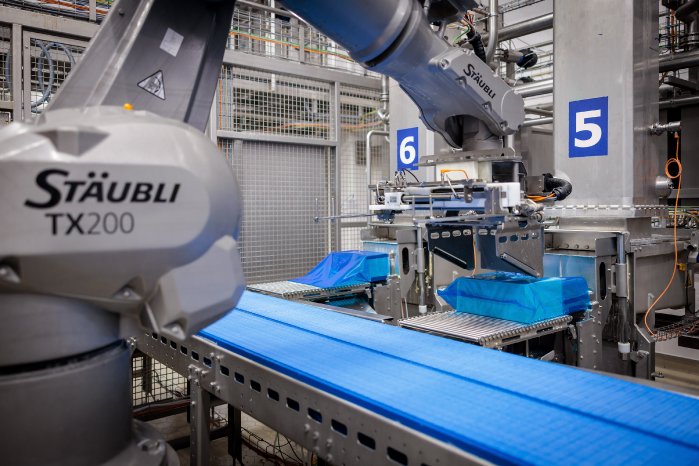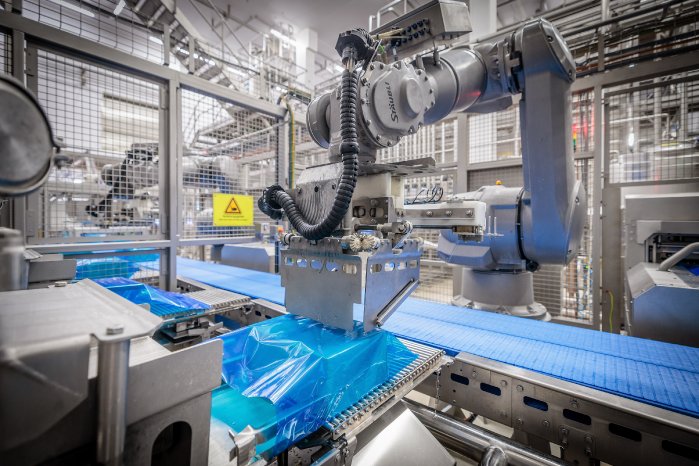To produce 35,000 tons of hard cheese per year, about 350 million liters of milk are needed. Since each dairy cow yields around 10,000 liters of milk a year, around 35,000 cows – most from Saxony-Anhalt, Saxony and Brandenburg – supply the necessary raw material for the hard cheese factory of the BMI dairy cooperative in Jessen. The overall site, with mozzarella cheese factories, processes some 1.5 million liters a day.
Flexible large-scale production on state-of-the-art equipment
This site, which also produces whey powder products, is not only the largest cheese factory in the BMI group, but also a major producer throughout Germany, especially since its product diversity is broad and its production is highly flexible: BMI produces Cagliata, white and red cheddar, Edam and Emmental among others in Jessen. A large portion of these products go to industrial customers, but they also go to retail chains for end consumers under the Paladin brand or private labels.
Between 2017 to 2019, the company invested the impressive sum of more than €100 million, including investment in a new hard cheese factory to produce these volumes and varieties economically with consistently high quality. The entire plant runs 20/7, as Thomas Benicke, production manager at the hard cheese factory explains, "We produce for 20 hours. Then the entire plant stops, gets cleaned, and a new production cycle begins.”
Primary packaging of cheese blocks in two robotic cells
This pace also applies to the final stage, namely packaging. When the cheese leaves the drainage belt, it enters one of six Tetra Pak Casomatic SC7 systems via a pipeline. These systems continuously and fully automatically handle pre-pressing, forming cheese blocks, and filling. The final product is cheese blocks weighing precisely 15 or 20 kg, ready for packaging.
BMI commissioned Lemmermeyer GmbH & Co KG Edelstahl-Anlagenbau in Deiningen, Germany, which has extensive experience with handling and packaging lines for the food industry – and has broken new ground in this area.
5.5 tons of cheese per hour packed in blocks
Three of each of the six Tetra Pak columns are assigned to a robotic cell with a Stäubli six-axis TX-200L robot in HE (humid environment) design. With a load capacity of 100 kg and reach of 2.60 meters, the robots are optimally prepared to handle the cheese blocks, and thanks to the gripper developed by Lemmermeyer, also have multitasking capability.
The base-mounted robot first grips a film tube and pulls it over the film shoe of the filling column. The system then pushes the 15- or 20-kg block of cheese into the tube, or two blocks of cheese if 40-kg units are being produced. The robot places the prepackaged cheese on a two-track pre-buffer conveyor belt, forming batches of 4 x 15 kg or 4 x 20 kg, or 2 x 40 kg. The batches are aligned and prepared for vacuuming and sealing. The following steps then take place: metal detection, labeling and leakage testing before the blocks are conveyed to the ripening area.
Because the robot is so versatile, the gripper developed by Lemmermeyer has several functions. A film spreader takes over the bag provided. Once the cheese has been pushed in, a flat gripper is used to place the block on the two-track conveyor belt. In doing so, it rotates every second block by 180 degrees so that the feed for the vacuum system is optimally utilized.
Flexible automation
The two robots perform their tasks with great endurance and a remarkable packing capacity of up to 5.5 tons per hour – equivalent to eight to 12 blocks per minute. Despite the high throughput, the systems are also extremely flexible. For example, the division into two identical cells ensures that production and packaging can still be performed even if one of the two cells is at a standstill.
If required, the blocks can also be moved out of the cell in the opposite direction and removed via the infeed conveyor belt. And of course, blocks with different weights can also be packed and handled. The control system, with clear visualization of the entire system, offers many possibilities.
Robots: Set for hygiene from base to wrist
However, the main reason BMI invested in flexible automation was not for personnel reduction but for high hygiene standards. Thomas Benicke: "As a cheese factory whose core production processes are prompted by bacteria, we must avoid the risk of introducing contamination at all costs. This is best achieved when humans do not intervene."
That said, people do come into contact with the robots once a day during thorough lathering in cleaning mode. After just one process like this, a "normal" robot would hardly be operational. But Stäubli HE robots are prepared for this from base to wrist. All cables are routed inside the housing, which is also slightly pressurized to prevent liquid or moisture from penetrating. There are no dead spaces where residual dirt can settle, and the coating is also hygiene-compliant.
100 tons of block cheese a day – with a cycle time of 10 seconds
This means that the robots can be used reliably in processes where hygiene is critical – even with thorough daily cleaning e.g., by washing with water-based media with a pH range from 2 to 12. Regardless, they work durably over long periods despite the high strain; after all, as the "sole workers" in their cell, they handle around 100 tons of block cheese a day with a cycle time of 10 seconds. This is proven by the packaging line developed by Lemmermeyer at BMI in Jessen – as well as many other installations with hygienic Stäubli robots in the food industry.







